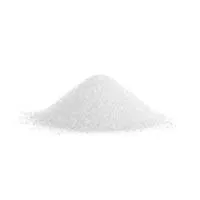
Exploring the Properties and Applications of 85% Formic Acid in Industry
Understanding 85% Formic Acid Properties, Uses, and Safety
Formic acid (HCOOH), the simplest carboxylic acid, has been utilized in various applications ranging from agriculture to the chemical industry. Among its various concentrations, 85% formic acid is one of the most frequently used forms due to its balance of effectiveness and handling properties. This article aims to delve into the characteristics, applications, and safety considerations associated with 85% formic acid.
Chemical Properties and Composition
85% formic acid is a colorless, pungent liquid that is hygroscopic, meaning it can absorb moisture from the atmosphere. It has a molecular weight of approximately 46.03 g/mol and a boiling point of 100.8°C (213.4°F). This concentration of formic acid constitutes a significant amount of the acid in solvent form, mixed primarily with water. The presence of such a high concentration allows for greater potency in various applications, making it a valuable chemical in both industrial and laboratory settings.
The acid is soluble in water, alcohol, and ether, which facilitates its mixing with other compounds. It is also known for its corrosive properties, especially towards metals, and thus requires careful handling and storage to prevent damage.
Applications
One of the most notable uses of 85% formic acid is in the textile industry, where it serves as a dyeing and finishing agent. The acid helps in the pre-treatment of wool and other fibers, enhancing their affinity for dyes and enabling vibrant color retention.
In the agricultural sector, formic acid serves as a preservative for silage and as an antibacterial agent in animal feed. Its ability to inhibit the growth of harmful bacteria helps improve the quality and shelf-life of animal feed, ultimately contributing to more efficient livestock management.
The pharmaceutical and chemical industries also exploit 85% formic acid for synthesizing various compounds. It acts as a crucial intermediate in producing pharmaceuticals, agrochemicals, and other organic compounds, making it a vital ingredient in many chemical manufacturing processes.
85 formic acid

Formic acid is also used as a reducing agent in various chemical reactions. Its ability to donate electrons makes it suitable for reducing precious metals from their ores, providing an economical and efficient means of extraction.
In addition, formic acid functions as a catalyst in some reactions, accelerating the conversion of reactants into products. Its use extends to the electrochemical field, where it can be utilized in fuel cells, particularly in direct formic acid fuel cells (DFAFC).
Safety Considerations
While 85% formic acid has numerous applications, it is essential to acknowledge its hazardous nature. The acid is classified as corrosive and can cause severe burns upon contact with skin or eyes. Inhalation of vapors can lead to respiratory issues, and accidental ingestion can cause severe gastrointestinal damage.
Appropriate safety measures are vital when handling 85% formic acid. Personal protective equipment (PPE), including gloves, goggles, and lab coats, should always be worn to prevent exposure. Adequate ventilation is necessary to minimize inhalation risks, especially when working in enclosed spaces.
Storage is equally critical; formic acid should be kept in a cool, dry place away from incompatible materials such as strong oxidizers and bases. Containers should be clearly labeled, and spill kits should be readily available in case of accidental leakage.
In the event of exposure, immediate action is necessary. Skin contact should prompt washing with plenty of water for a minimum of 15 minutes, while eye exposure requires flushing with water and seeking medical assistance promptly.
Conclusion
85% formic acid is a highly versatile chemical with wide-ranging applications in various industries, from textiles to agriculture and pharmaceuticals. Its potency and effectiveness make it invaluable in many processes, but this comes with safety considerations that must be strictly adhered to. Understanding the properties, uses, and handling precautions associated with 85% formic acid is essential for minimizing risks and maximizing its benefits in industrial applications. As the demand for such chemicals continues to grow, maintaining a keen awareness of safety and functionality will remain paramount.
-
Pure Sodium Dichloroisocyanurate Dihydrate | Powerful DisinfectantNewsAug.29,2025
-
Industrial Chemicals: Quality & Purity for Every IndustryNewsAug.28,2025
-
Nitrile Rubber Honoring Strict Production StandardsNewsAug.22,2025
-
Aspartame Ingredients Honoring Food Safety ValuesNewsAug.22,2025
-
Fertilizer for Balanced Plant NutritionNewsAug.22,2025
-
Cyanide Gold Processing with High Purity AdditivesNewsAug.22,2025
-
Formic Acid in Textile Dyeing ApplicationsNewsAug.22,2025
Hebei Tenger Chemical Technology Co., Ltd. focuses on the chemical industry and is committed to the export service of chemical raw materials.
-

view more DiethanolisopropanolamineIn the ever-growing field of chemical solutions, diethanolisopropanolamine (DEIPA) stands out as a versatile and important compound. Due to its unique chemical structure and properties, DEIPA is of interest to various industries including construction, personal care, and agriculture. -

view more TriisopropanolamineTriisopropanolamine (TIPA) alkanol amine substance, is a kind of alcohol amine compound with amino and alcohol hydroxyl, and because of its molecules contains both amino and hydroxyl. -

view more Tetramethyl Thiuram DisulfideTetramethyl thiuram disulfide, also known as TMTD, is a white to light-yellow powder with a distinct sulfur-like odor. It is soluble in organic solvents such as benzene, acetone, and ethyl acetate, making it highly versatile for use in different formulations. TMTD is known for its excellent vulcanization acceleration properties, which makes it a key ingredient in the production of rubber products. Additionally, it acts as an effective fungicide and bactericide, making it valuable in agricultural applications. Its high purity and stability ensure consistent performance, making it a preferred choice for manufacturers across various industries.





